Every development team knows the pressure to deliver more, faster. But when priorities shift, silos form, and communication breaks down, progress slows and confidence takes a hit. It’s rarely about effort: most teams are already working hard. The real issue is a lack of shared structure for seeing the work clearly, learning from it, and adapting together.
That’s exactly what Scrum was designed to solve. At the heart of the framework are three simple but powerful pillars: transparency, inspection, and adaptation. They form an approach where decisions are based on evidence and experience instead of assumptions, helping teams stay aligned and respond quickly to change.
In this helpful guide, we’ll break down each of the three pillars of Scrum, show how they work together to remove blockers, and explore how they strengthen collaboration across both technical and business teams. You’ll also see how putting these principles into daily practice — especially with the right platform to support them — sets the stage for faster delivery and more confident outcomes.
Key takeaways
- A three-legged stool: the three pillars of scrum — transparency, inspection, and adaptation — work together. Remove one, and your entire scrum process falls apart.
- Shared visibility: transparency means making all work visible to everyone involved, from progress updates to problems. This shared view prevents surprises and helps teams make informed decisions.
- Early problem-spotting: regular inspection of your work and processes helps you spot issues early before they become expensive disasters. Focus on examining both what you’re building and how you’re building it.
- Seamless integration: monday dev strengthens all three pillars through visual boards, real-time dashboards, and flexible workflows. Teams can see progress instantly, track issues effectively, and adapt processes without losing momentum.
- Change as learning: adaptation means changing course immediately when inspection shows something isn’t working. Successful teams treat change as normal learning, not a failure to plan.
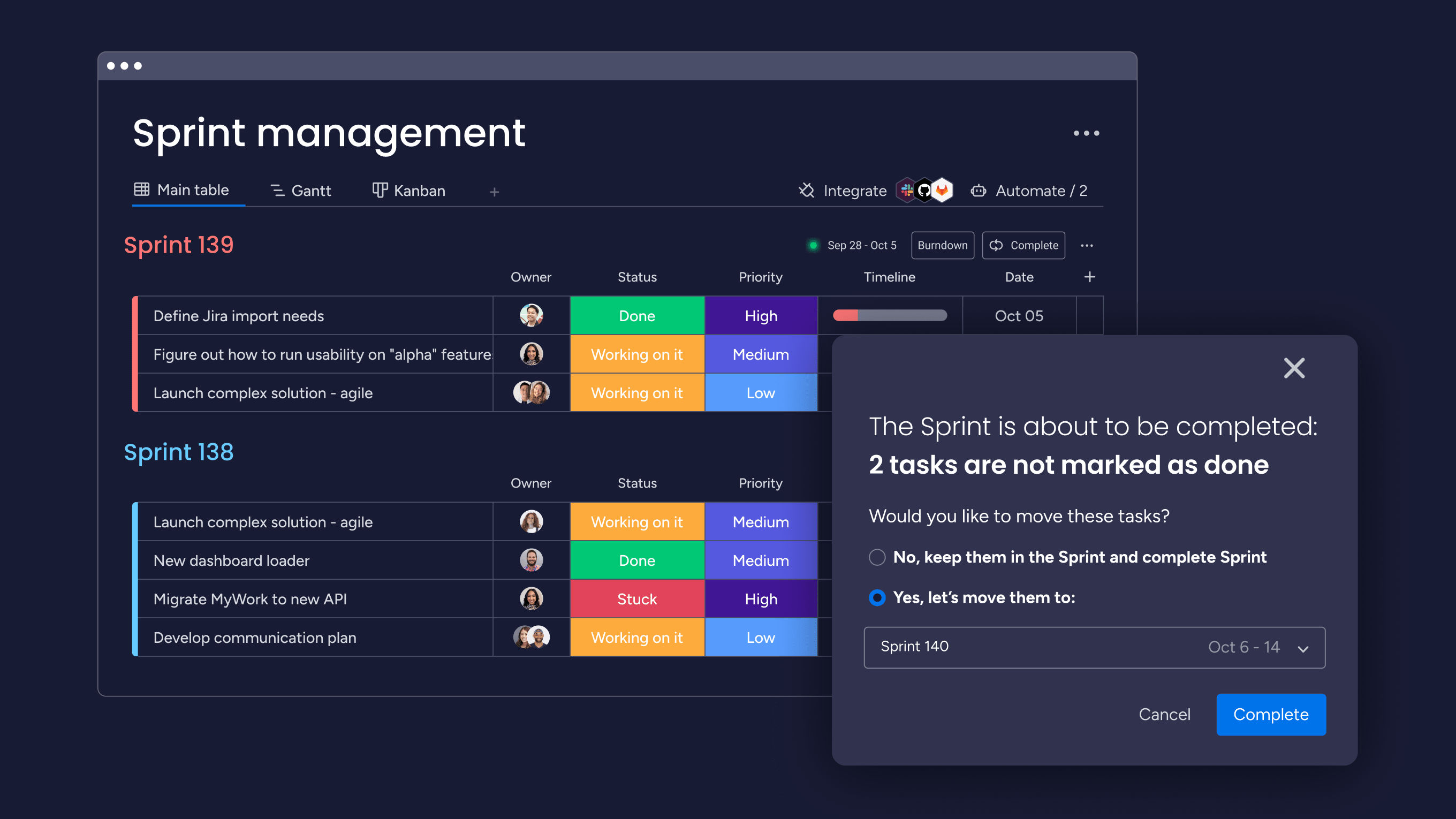
What are the 3 pillars of scrum?
The 3 pillars of scrum are transparency, inspection, and adaptation. These form the foundation of empirical process control — a way of working where you make decisions based on observation and experience, allowing your team to quickly pivot when needed based on feedback.
Think of these pillars as the legs of a three-legged stool. Remove one, and the whole thing falls over. Each pillar supports and strengthens the others, creating a Scrum framework that helps teams deliver value in unpredictable environments.
Transparency
Transparency means making all work visible to everyone involved. This includes what you’re working on, how it’s progressing, and what problems you’re facing.
When your team practices transparency, everyone sees the same picture. You share the same understanding of requirements, progress, and obstacles. This shared visibility prevents surprises and helps everyone make informed decisions.
Inspection
Inspection is the regular check of progress and Scrum artifacts such as the product increment and sprint backlog to confirm the team is on track. It’s not about micromanagement but about catching issues early so they can be fixed before they grow.
Adaptation
Adaptation means changing course when inspection shows you need to. When you discover something isn’t working, you adjust your approach immediately.
This pillar gives Scrum its flexibility. You remain flexible and pivot based on what you learn.
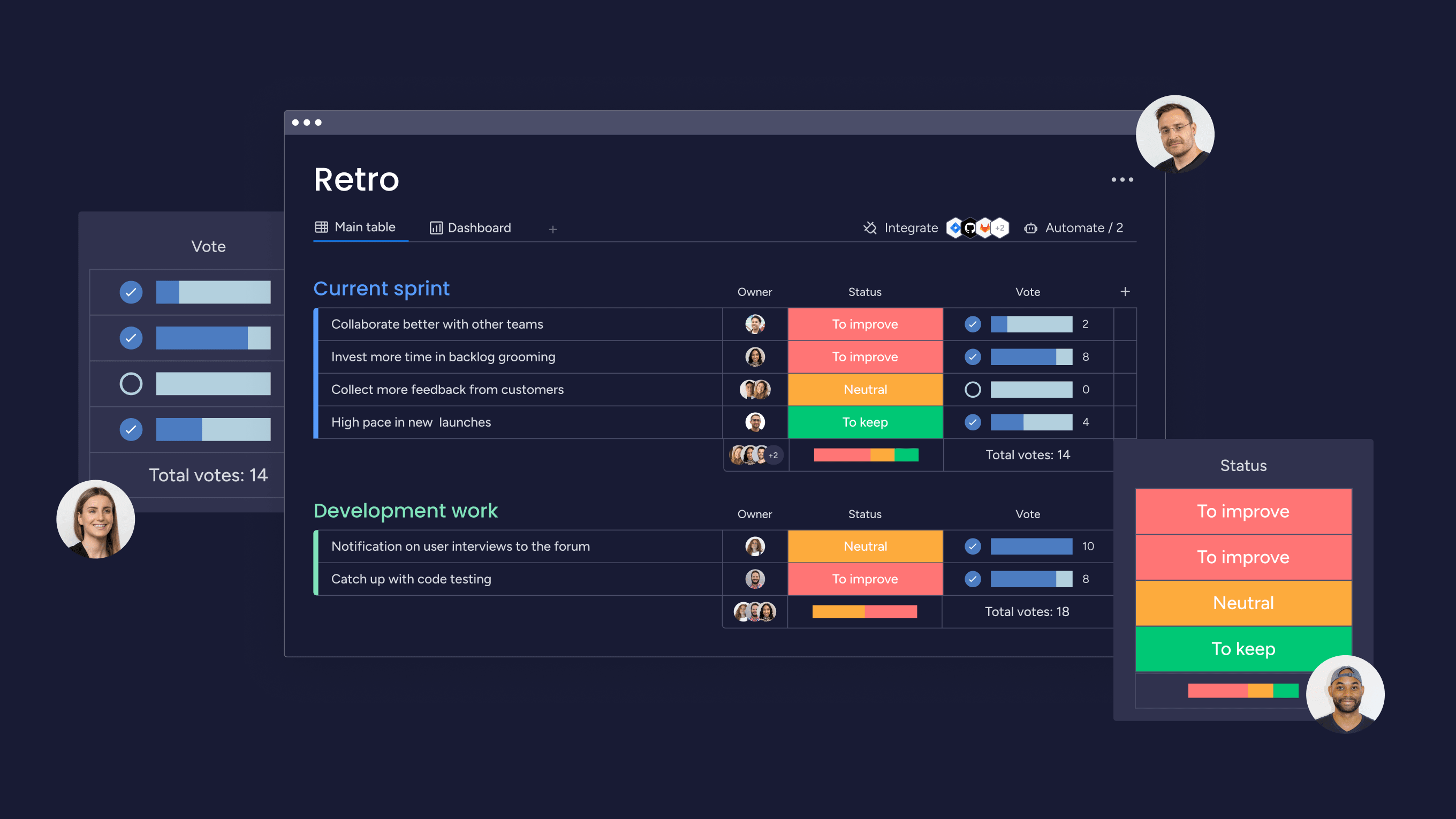
Understanding transparency in Scrum
Transparency is the foundation that makes the other two pillars possible. Without it, your Scrum team can’t inspect effectively because you don’t know what’s really happening. And without good inspection, your adaptations become guesses rather than informed decisions.
Real transparency goes beyond just sharing information too; it means creating an environment where people feel safe being honest about progress and problems. When team members hide struggles or inflate progress, the whole system breaks down.
Why transparency matters for development teams
Have you ever worked on a project where you discovered a major problem too late to fix it easily? This is a common challenge that transparency helps solve.
When work is visible, problems surface quickly. Dependencies become clear before they cause delays. Stakeholders understand both progress and setbacks, which builds trust even when things go wrong — a crucial element as research shows only 61% of employees in large enterprises are satisfied with transparency.
Teams with strong transparency practices also make decisions faster by wasting less time in status meetings because everyone already knows the current state. They also avoid the painful surprises that can sometimes derail projects at the last minute.
Building transparency in your Scrum process
Creating transparency requires deliberate practices and the right supporting systems. It’s really important to establish clear standards that everyone understands and follows consistently.
Here are the key elements that create meaningful transparency in Scrum teams:
- Clear definition of done: everyone agrees on what “complete” means for each type of work.
- Visible work progress: current status is obvious to anyone who needs to know
- Open communication: team members share both good news and bad news promptly.
- Accessible artifacts: sprint backlogs, burndown charts, and other documents are easy to find and understand.
- Transparent decision-making: the team understands not just what decisions were made, but why.
A platform like monday dev can really help support these transparency practices through customizable boards and real-time dashboards. Teams can see sprint progress, track blockers, and share updates instantly — keeping everyone aligned without extra meetings or status reports.
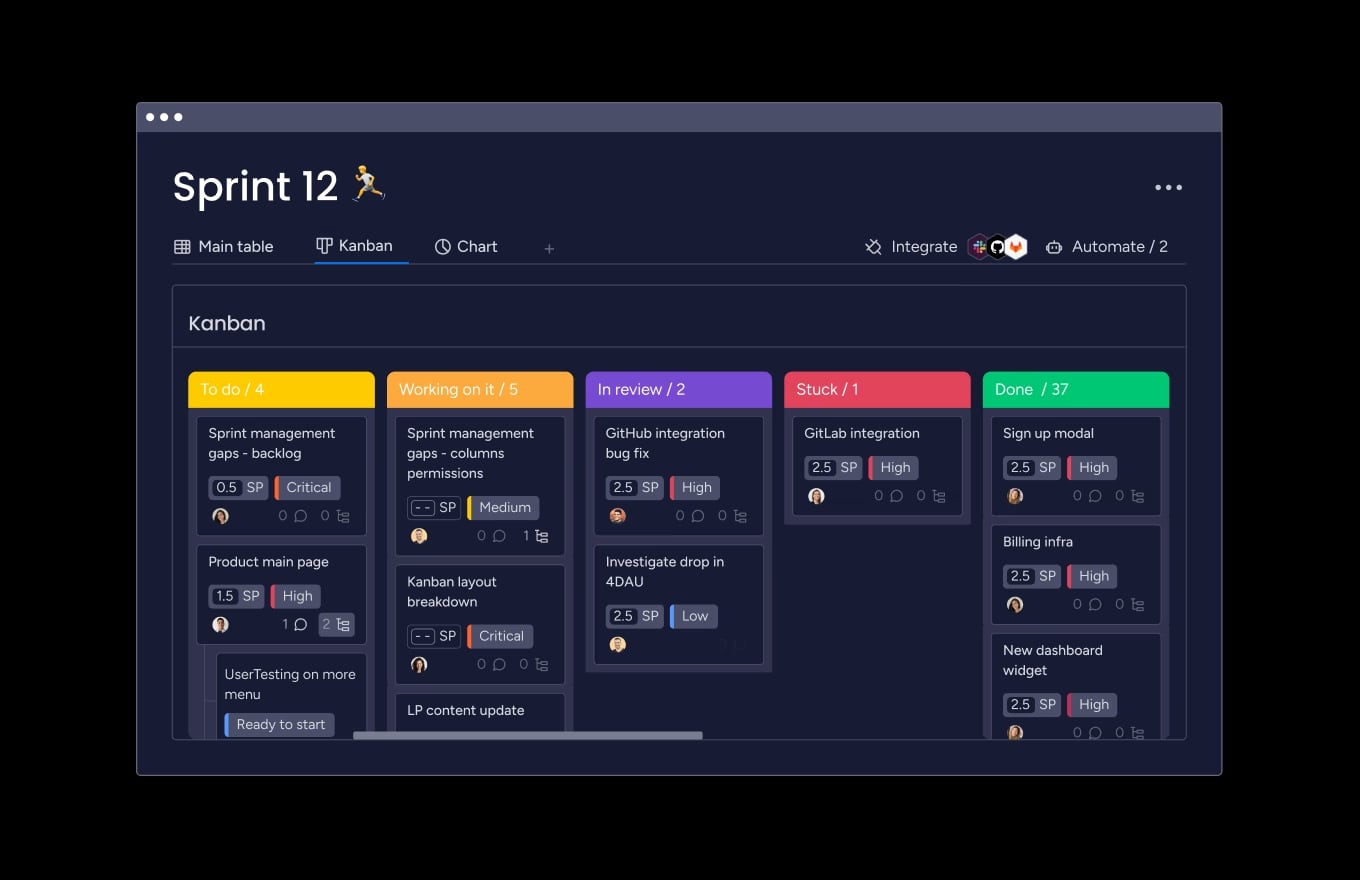
Mastering inspection in Scrum
But how do you ensure inspection is effective and not just a box-ticking exercise? In Scrum, inspection is a structured process built into specific events and practices. This approach ensures regular, meaningful examination of your work.
The key is making inspection meaningful. You’re not just going through the motions or checking boxes. You’re actively looking for insights that help you improve.
When and how inspection happens
Scrum builds inspection into its regular rhythm through four formal events for inspection and adaptation. Daily stand-ups let you inspect progress every 24 hours, sprint reviews examine the product increment with stakeholders, and retrospectives inspect how the team worked together.
However, keep in mind that inspection also happens continuously. Developers review each other’s code. Testers examine features as they’re built. Product owners check that requirements are being met correctly.
What Scrum teams should inspect
Effective inspection covers both your product and your process. You need to ensure you fully examine what you’re building, and how you’re building it.
Focus your inspection efforts on these critical areas:
- Product increment quality: does the completed work meet your definition of done?
- Sprint goal progress: are you on track to achieve what you committed to?
- Team performance: how well are you collaborating and delivering together?
- Process effectiveness: which parts of your workflow help or hinder progress?
- Stakeholder feedback: what are customers and users telling you about your product?
How to make inspection effective
The best inspection leads to action. If you’re inspecting but nothing changes as a result, you’re wasting time.
Create an environment where people feel safe pointing out problems. Ask specific questions that uncover real issues, not surface-level observations. Most importantly, connect what you discover during inspection to concrete improvements you can make.
Implementing adaptation in Scrum
Adaptation is where Scrum reveals its true power. While other approaches lock you into plans made months ago, Scrum lets you adjust based on current reality.
But adaptation isn’t chaos. It’s thoughtful change based on what you’ve learned through transparency and inspection. You balance the need for stability with the flexibility to improve.
How adaptation works in practice
Adaptation happens at different scales and timeframes. During a Scrum sprint, you might adapt by reassigning work when someone gets sick. Between sprints, you might change your estimation approach based on velocity trends.
The key is to treat adaptation as a normal part of the process because successful teams view adaptation as the path to success in uncertain environments.
A platform like monday dev can make adaptation seamless through flexible workflows and customizable processes. When inspection reveals a bottleneck, you can reorganize your board instantly. When priorities shift, you can update your backlog without losing track of work in progress.
Real examples of Scrum adaptation
What does adaptation look like in real development teams? Here are common scenarios where teams successfully adapt:
- Changing sprint scope when urgent bugs appear.
- Adjusting team processes after retrospectives reveal communication gaps.
- Pivoting feature priorities based on user feedback from sprint reviews.
- Reallocating team members when work bottlenecks in one area.
- Modifying definition of done when quality issues emerge.
- Updating estimation techniques when agile velocity becomes unpredictable.
Enabling quick adaptation
Adaptation is at the heart of Scrum, but it doesn’t happen by accident. Teams need the right environment and practices in place to adjust quickly when priorities shift or problems surface. Without this foundation, inspection simply reveals issues without creating change.
Quick adaptation depends on three key elements:
- Empowered teams: the authority to make changes without waiting for long approval chains.
- Short feedback loops: frequent inspection that uncovers issues early while they’re still manageable.
- Supportive culture: an organization that treats adaptation as learning, not failure.
Boundaries also matter. Teams should know what decisions they can make independently and which require stakeholder input. This clarity speeds action while maintaining alignment across the organization.
How the 3 pillars of Scrum work together
The three pillars of Scrum aren’t meant to stand alone. Each one supports the others in a continuous cycle that keeps teams aligned and moving forward. Transparency makes inspection meaningful, inspection highlights the need for adaptation, and adaptation improves both the process and visibility for the next cycle.
When any pillar is weak, the whole framework suffers. A lack of transparency turns inspection into guesswork. Skipping inspection allows problems to grow unnoticed. Avoiding adaptation leaves teams stuck with the same challenges sprint after sprint.
The table below shows how each pillar enables the next, and the results teams can expect when all three work together.
| Pillars | Enables | Results |
|---|---|---|
| Transparency | Meaningful inspection | Teams see what's really happening |
| Inspection | Informed adaptation | Teams know what needs to change |
| Adaptation | Improved transparency | Changes make future work more visible |
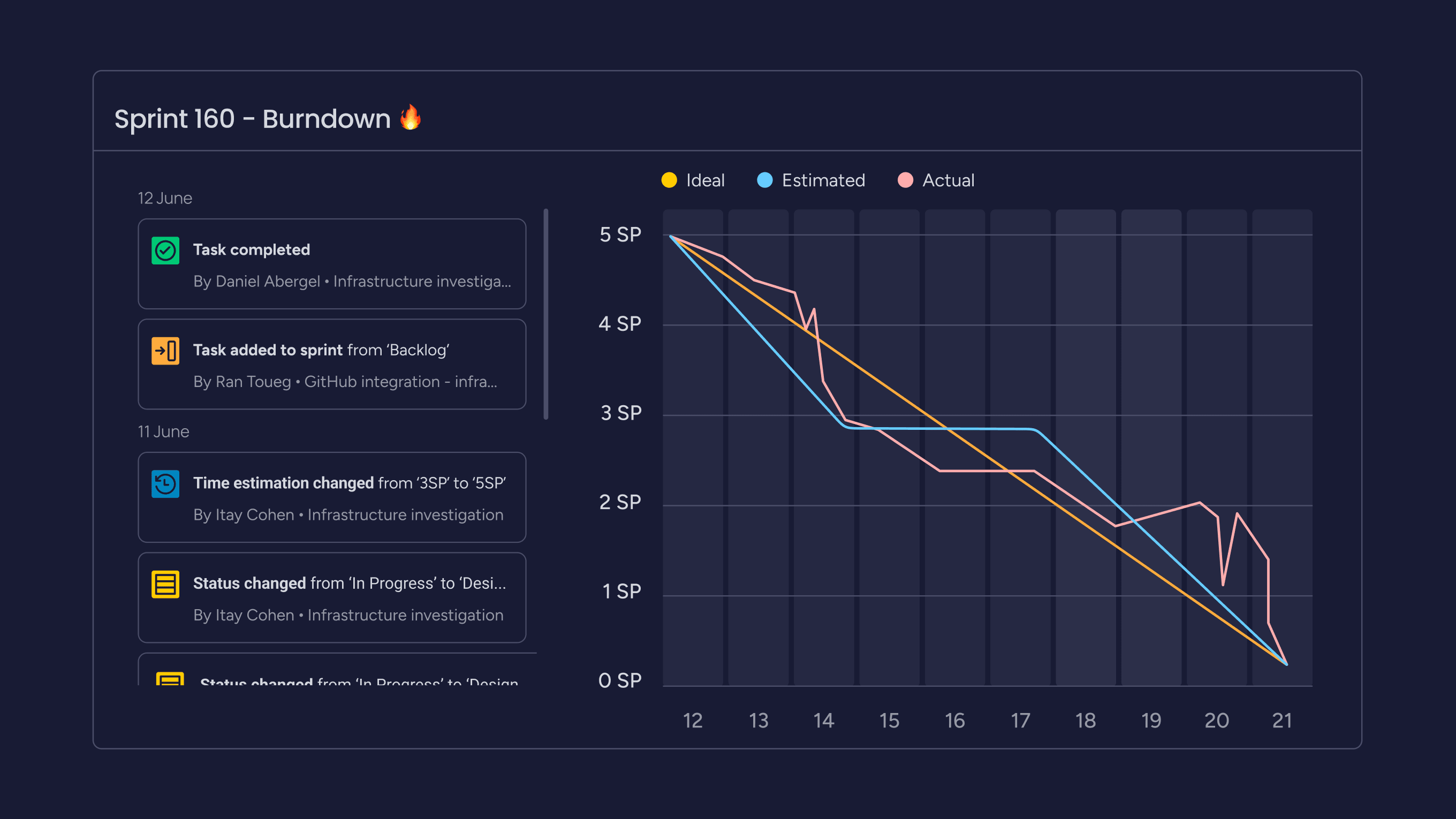
Scrum values and the 3 pillars: explaining the connection
The three pillars of Scrum don’t stand on their own. They rely on the five Scrum values
to bring them to life in daily work. These values shape how teams approach goals, handle challenges, and interact with one another.
First, we’ll look at the core Scrum values themselves, then see how each one directly supports transparency, inspection, and adaptation.
The 5 core Scrum values
These five values guide how Scrum teams work together and turn the framework’s pillars into real practices. They set the tone for collaboration, decision-making, and continuous improvement.
- Commitment: sticking with team decisions and seeing adaptations through.
- Courage: speaking up about problems and tackling difficult changes.
- Focus: concentrating on sprint goals to maintain clarity and transparency.
- Openness: sharing information honestly to enable real transparency.
- Respect: valuing different perspectives during inspection and adaptation.
Mapping values to the 3 pillars
Openness directly enables transparency. When team members openly share progress, problems, and concerns, everyone gets an accurate picture of reality.
Courage supports honest inspection. It takes courage to point out that something isn’t working or that the team is falling behind. Without courage, inspection becomes superficial.
Commitment ensures teams follow through on adaptations. Identifying improvements means nothing if you don’t commit to implementing them.
Solving common challenges with the pillars of Scrum
Even experienced teams struggle with the three pillars. Recognizing common challenges helps you address them before they undermine your Scrum implementation. Consulting the official Scrum guide can also help clarify the fundamentals.
Most challenges stem from organizational culture or old habits as teams often bring practices from traditional project management that conflict with Scrum’s empirical approach.
Transparency roadblocks and solutions
Information hoarding kills transparency! Some team members keep information to themselves, either from habit or fear of judgment.
Common transparency challenges and their solutions:
- Information hoarding: create psychological safety so people share freely.
- Unclear communication: use structured formats for updates and standard definitions.
- Tool proliferation: consolidate information in one accessible location.
- Overwhelming detail: focus on information that drives decisions, not every minor detail.
Inspection pitfalls to avoid
Superficial inspection wastes everyone’s time. Going through the motions without generating insights misses the entire point.
Watch out for these inspection mistakes:
- Checkbox mentality: focusing on completing inspection events rather than finding insights.
- Blame culture: using inspection to find fault rather than improve.
- Skipping when busy: dropping inspection during crunch times when you need it most.
- Looking backward only: focusing on past problems without considering future prevention.
Adaptation barriers and solutions
Even when inspection highlights the need for change, many organizations resist adaptation. The pushback can come from leadership, stakeholders, or team members who feel safer sticking with familiar ways of working. This disconnect is common with research showing that 45% of senior leaders believe change is managed “very well,” only 23% of individual contributors agree.
To break through these barriers, involve stakeholders early in the inspection process so they can see the data first-hand and understand why change is needed. Make adaptation a regular part of your team’s rhythm, treating it as a natural step in every sprint rather than an exception.
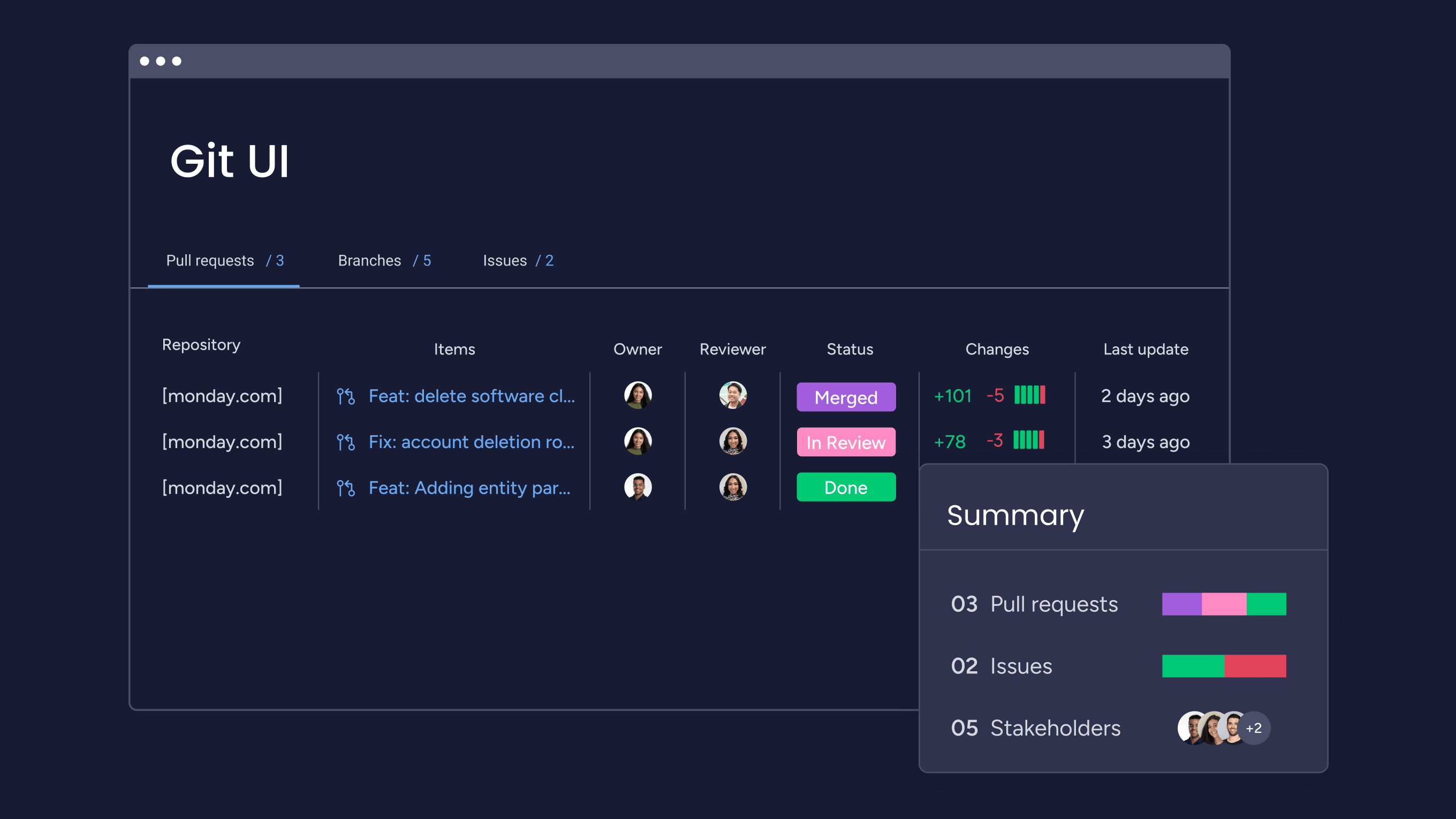
The 3 pillars: best practices for modern teams
Modern development teams face unique challenges. Remote work, distributed teams, and complex technical stacks require evolved approaches to the three pillars.
Digital platforms become essential for transparency when your team spans time zones. Asynchronous inspection methods complement traditional ceremonies. Adaptation processes must account for coordination across locations and schedules.
monday dev addresses these modern needs through cloud-based visibility, async collaboration features, and flexible workflows that adapt as teams grow and change. Whether your team is co-located or distributed across continents, you can maintain the benefits of all three pillars.
Implementing the pillars in remote teams
Working remotely removes the casual conversations and physical boards that co-located teams often rely on, so the three Scrum pillars need extra care to stay effective across distance and time zones.
Transparency comes from clear documentation and asynchronous communication. Inspection works best when supported by recorded demos and detailed written updates that give everyone a shared view of progress. Adaptation requires defined decision-making processes that don’t depend on the entire team being online at once.
In distributed settings, it’s better to err on the side of sharing more rather than less. What might feel like over-communication in the same office often turns out to be just enough when a team is spread across locations.
How monday dev strengthens all 3 pillars of Scrum
The three pillars work best when supported by tools that make them easy to apply every day. With monday dev, transparency feels natural through visual boards and real-time updates that keep everyone aligned around the same information.
Inspection becomes more meaningful when teams can track Scrum metrics in customizable dashboards, review burndown charts, and analyze performance patterns without relying on manual tracking. These insights come directly from the team’s actual work, giving a clear picture of progress.
Adaptation is smoother too. Workflows, boards, and processes can be adjusted the moment inspection reveals a need for change, so your Scrum tools
adapt with you instead of holding you back.
Because it scales with team maturity, monday dev supports everything from basic adoption to advanced Scrum at scale, helping teams detect issues earlier, adapt with confidence, and build stronger alignment with stakeholders.
See how monday dev can help your team put the three pillars into practice and deliver with greater clarity and confidence. Try today!
Frequently asked questions
How do the pillars of Scrum differ from agile principles?
The pillars of Scrum — transparency, inspection, and adaptation — are specific to the Scrum framework and focus on empirical process control. Agile principles are broader Agile principles that apply across various methodologies like Kanban, XP, and others.
Can you implement Scrum successfully without all 3 pillars?
To implement scrum successfully, you need all three pillars because they are interdependent. Transparency enables effective inspection, which in turn provides the insights needed for meaningful adaptation. Each pillar strengthens the others to create a complete, functional process.
What is the relationship between Scrum principles and the 3 pillars?
The three pillars form the foundation of Scrum's empirical process control, while Scrum principles guide daily implementation. The pillars tell you what to do (be transparent, inspect regularly, adapt based on findings), while principles guide how to do it effectively.
What happens when one of the 3 pillars of Scrum is weak?
When one pillar is weak, it creates a cascade of problems throughout your Scrum implementation. Weak transparency leads to blind inspection. Poor inspection results in misguided adaptation. Failed adaptation means you repeat the same mistakes sprint after sprint.
How do remote teams maintain the 3 pillars of Scrum effectively?
Remote teams maintain the three pillars through digital platforms, structured async communication, and intentional over-communication. They use video recordings for transparency, written updates for inspection, and clear decision protocols for adaptation across time zones.
Are the pillars of agile the same as the pillars of Scrum?
The three pillars of transparency, inspection, and adaptation are unique to Scrum. While other Agile frameworks share similar values, they don't necessarily structure their approach around these specific pillars. Each framework has its own core concepts and practices.

